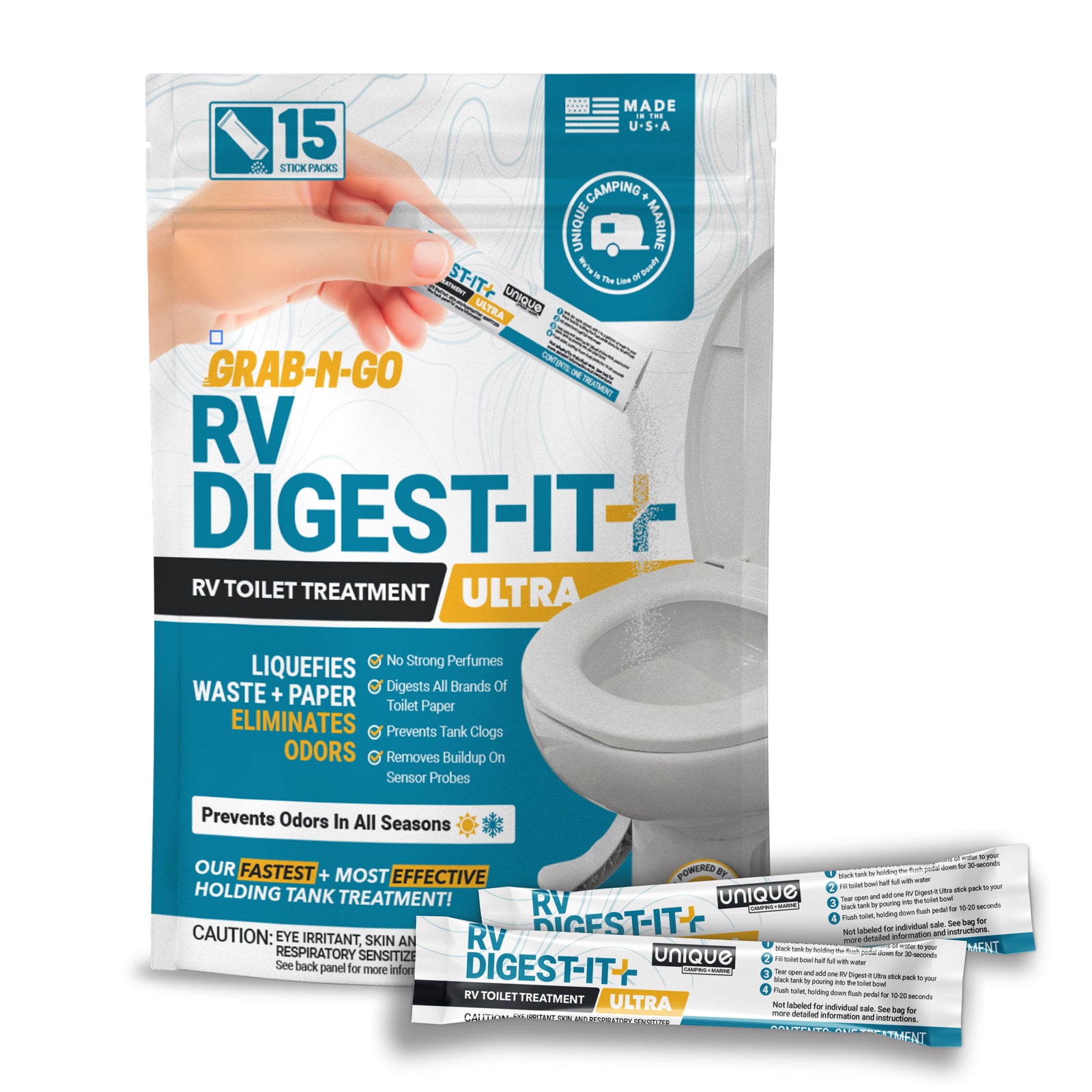
Read series from the beginning
The Unique Method offers a well-calculated mix of healthy care habits that will improve the condition of your holding tanks no matter what kind of treatment product you decide to use, the type of camping you’re doing, or what kind of weather arises. In this section, we’ll examine the actual steps for maintaining trouble-free gray water tanks.
The best way to get the most success out of using the method is to combine it with the products for which it was created. Follow the guidelines below as closely as possible, and you will easily avoid clogs, odors, and misreading sensors.
Note: RVers with Class B RVs or others with smaller sized holding tanks can still apply our recommendations, with adjustments for a smaller tank.
Gray & Galley Tank Rules For Hookup Camping
- Deep clean your gray tanks often, using a strong grease-eating cleaner like Dawn Ultra dish soap to prevent sensor problems and odors.
- Leave your gray tank valve open with the sewer discharge hose connected to the sewer port. Add a p-trap to the sewer discharge hose, with water in the P-trap bend to prevent sewer odors, gas, and sewer flies from backing up into the RV.
- Wash your dishes with a high-quality grease-eating dish soap like Dawn Ultra.
- Scrape plates and use sink strainers to minimize the amount of food, grease, and debris that goes down your kitchen and bathroom drains.
- Avoid using caustic or antibacterial chemicals when cleaning your tub, shower, or sinks.
- Deep clean your gray / galley tanks before storing your RV. Store gray tanks dry.
Gray & Galley Tank Rules For Dry Camping
- Deep clean your gray tanks often, using a strong grease-eating cleaner like Dawn Ultra dish soap to prevent sensor problems and odors.
- Keep your gray tank valve closed except when dumping your tanks at an approved dump station.
- Wash your dishes with a high-quality grease-eating dish soap like Dawn Ultra.
- Scrape plates and use sink strainers to minimize the amount of food, grease, and debris that goes down your kitchen and bathroom drains.
- Avoid using caustic or antibacterial chemicals when cleaning your tub, shower, or sinks.
- On the last night of your boondocking trip, perform a deep-clean on your gray/galley tanks using a strong grease-eating cleaner like Dawn Ultra dish soap. Store gray tanks dry.

Prevent Common Problems In Your Tanks!
From misreading sensors, preventing clogs, or eliminating odors, we've got you covered no matter how you camp! All our best holding tank tips and trick information plus more can be found conveniently in one place when you download our FREE Unique Method Field Guide PDF. Achieve holding tank bliss today!
Get The Free Download Get The Free Download



